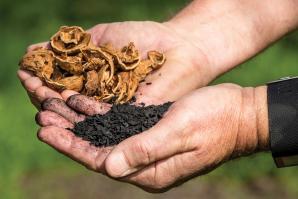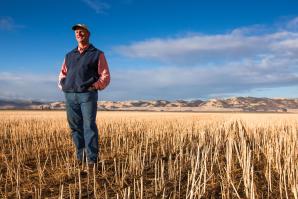California’s landmark greenhouse-gas reduction law, the Global Warming Solutions Act of 2006, turned 10 last month. Like most precocious 10-year-olds, AB 32 (as it’s better known) is very much a work in progress.
For the uninitiated, AB 32 requires California to reduce its annual greenhouse gas emissions to 1990 levels by 2020. That part is relatively straightforward. How we do that has been the harder part.
Let’s start with the good news. By just about any measure, the law appears to be doing what it is intended to do. California has already significantly reduced its GHG emissions and the state is clearly on target to meet its 1990-by-2020 mandate. And in spite of the cries from many that the legislation would be a dagger in the heart of the business community, the state economy has actually grown faster during this time than every state but Oregon. Along the way, AB 32 has had a major impact on numerous aspects of our economy and our way of life, from how the state produces and acquires energy to how efficient our buildings are, to the kind of cars we drive.
Jon Costantino, a senior adviser with law firm Manatt, Phelps & Phillips, says that kind of impact cannot be taken lightly. “AB 32 has been an amazing, world-changing bill. It has fundamentally changed the state,” says Costantino, who once headed the team at the California Air Resources Board that developed what would become the cap-and-trade program, one of AB 32’s most effective GHG–reduction tools.
Related: Will the Mega-Grid Get Built?
But the long-term fate of the nascent cap-and-trade program, which requires California polluters to buy “allowances” to pay for the emissions they create, is uncertain. The program, which started in 2013, is only authorized through 2020. What happens after that is an open question. CARB says it has the power to re-authorize the plan on its own. Gov. Jerry Brown says he agrees, though apparently his resolve is not so steely. During the waning days of the legislative session in September, the governor lobbied lawmakers to reauthorize cap-and-trade, but they blew him off. Meanwhile, both Republicans and the state’s Legislative Council Bureau contend the program’s extension needs legislative approval.
If that sounds like a giant fustercluck, it is. And then there is the ongoing lawsuit from the California Chamber of Commerce and other business groups, who argue that cap-and-trade revenues constitute a tax that under the tenets of the state’s historic Proposition 13 requires two-thirds majority approval from lawmakers, which AB 32 did not have. The suit wound its way through the system for years without much resolution. That potentially changed in April when a federal appeals court seemed to imply it was leaning toward ruling in favor of the plaintiffs.
All of which matters a hell of a lot. While cap-and-trade is only one tool of many CARB is using to cut GHG emissions, it’s one of the most effective. Without it, California would have to truly double down on the rest of its efforts. That was probably always the case anyway, but now more than ever because, while lawmakers ignored Brown’s cap-and-trade request, they did codify a new goal — cutting GHG emission to 40 percent below 1990 levels by 2030. This is in addition to the governor’s other states goals, including convincing Golden State motorists to cut petroleum use by 50 percent.
Uncertainty over cap-and-trade’s future is already punching holes in the state budget. The program has raised nearly $4 billion since its inception in 2013, but growing concern that it won’t be renewed has turned the last two allowance auctions into your weird aunt’s yard sale. Projected to continue raising about $600 million per quarter, the last two auctions have raised only $18 million combined.
That could have major impacts on emissions reductions programs all over the state. By law, 60 percent of cap-and-trade proceeds must go toward programs like public transit, affordable housing and other sustainable community measures. That includes Brown’s own pet project, high speed rail. With federal funding as likely as seeing Elvis at the gas station, Brown is counting heavily on cap-and-trade revenues to fund the controversial project. And cutting off the program now would seriously threaten the cap-and-trade partnership California has with Canadian provinces Quebec and Ontario.
Related: A Growing Green Debt?
The business community’s reaction to the latest emissions goals has been mixed. The usual suspects — manufacturers, the oil industry, etc. — have vocally expressed opposition. But so have many environmental justice groups, who contend that programs like cap-and-trade allow polluters to focus the worst of their activity in communities of color.
Other business groups support the new goals, albeit with some caveats. Jim Wunderman, president and CEO of the business advocacy group Bay Area Council, an original supporter of the law, says California’s leadership in addressing climate change has undoubtedly been a boon to the state’s economy.
“Being at the forefront of a global movement and investing in industries with global impact is definitely good for the economy,” he says. But he also notes the additional layers of bureaucracy AB 32 has imposed — in addition to the state’s already challenging regulatory environment — has blunted even greater growth. “We haven’t maximized this opportunity.”
According to Wunderman, a lot of investment is still going to other states. He notes the decision by California-born and based Tesla to build its massive gigafactory battery plant in Nevada rather than in its home state. “As leaders we need to re-evaluate all the regulations we’re imposing on businesses,” he says.
The regulation most often cited in such concerns is the California Environmental Quality Act. Signed into law by then-Gov. Ronald Reagan, CEQA requires the state to consider the environmental impacts of almost any development before it can be permitted. While the law has clearly kept some harmful projects from becoming reality, Wunderman notes it is also regularly used to block the kinds of development environmentalists want, like urban infill.
Sen. Ted Gaines — who co-authored a bill in 2014 to give Tesla some CEQA exemptions if they built the gigafactory here — is also not convinced AB 32 is behind the state’s recent economic good fortune, saying “We’ve been saved in many respects by the drop in world oil prices.” A change that spikes energy and fuel prices even more, he says, would be devastating to a state with the largest number of people living in poverty in the nation.
All of which makes the next few years a bit of must-watch activity around the Capitol. Brown has indicated he will pursue a ballot measure in 2018 to reauthorize cap-and-trade if lawmakers don’t act before then. Gaines says either path will be a tough sell.
“It’s going to be a huge challenge to get a re-authorization bill through the legislature,” he says. “And if it goes to the ballot, it will fail.”
Perhaps, but as with everything surrounding AB 32 implementation, the end results are far from determined. And barring anything completely unanticipated, the law is here to stay for the foreseeable future.
“AB 32 has definitely accomplished a great deal,” Costantino says. “But there’s a lot left to do.”
Recommended For You

The Great Water Waste
One way to mitigate a record-breaking drought: Stop throwing away perfectly good water
All water, conventional scientific wisdom goes, is recycled. The Earth’s water has been here since the planet formed some 4.6 billion years ago, and any given molecule may have passed through the bodies of dinosaurs, fish throughout the oceans, the living tissue of giant trees and numerous human beings.

Big Bad Biomass
Just because it’s renewable doesn’t make it clean
As California looks for ways to reduce its carbon footprint and help curb climate change, environmental activists are questioning the integrity of the biomass industry, which burns millions of tons of woody plant matter each year to help power the state’s electric grid.

Soil Matters
Local farmers find a switch to carbon farming good for business — and the environment
Russ Lester’s property looks, at first glance, like that of many of his neighbors. He grows about 900 acres of walnut trees a few miles east of Winters. But at Dixon Ridge Farms, Lester never tills his land, and he keeps cover crops growing most of the time. He also laces the earth around his trees with biochar, charcoal-like leftovers from biomass energy production.

From the Ground Up
No-till farming is still a hard sell in California — despite worldwide acceptance and cleaner air
At first glance, the concept of no-till farming seems a quaint relic of the past, a footnote in a history book, perhaps. Farmers in California’s central farmlands have been using large disks and tills to rip and turn their soil for almost a century. But no-till could have substantial human health benefits for Central Valley residents, as well as financial gains for farmers, according to some agricultural experts at UC Davis and across the country.



